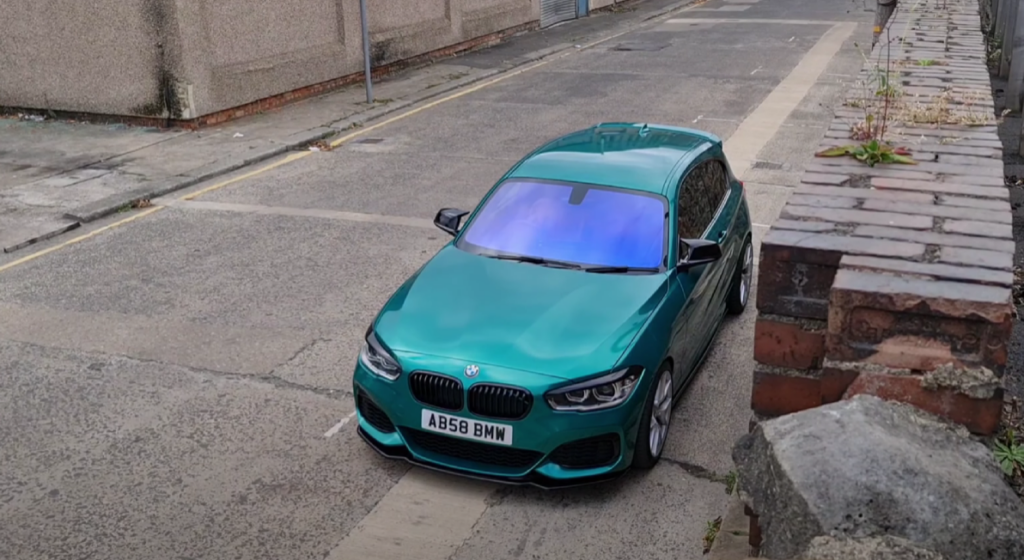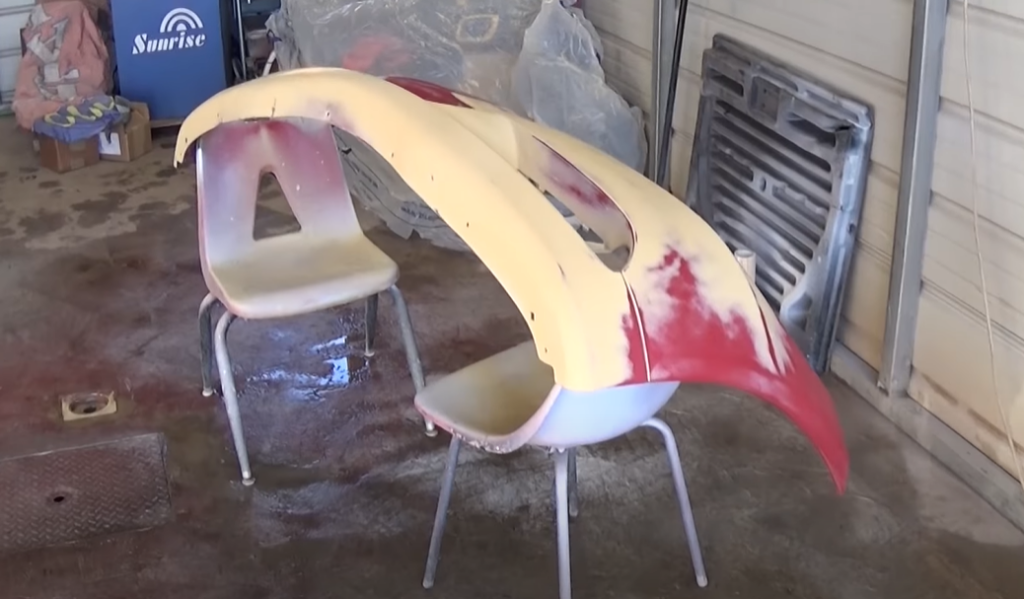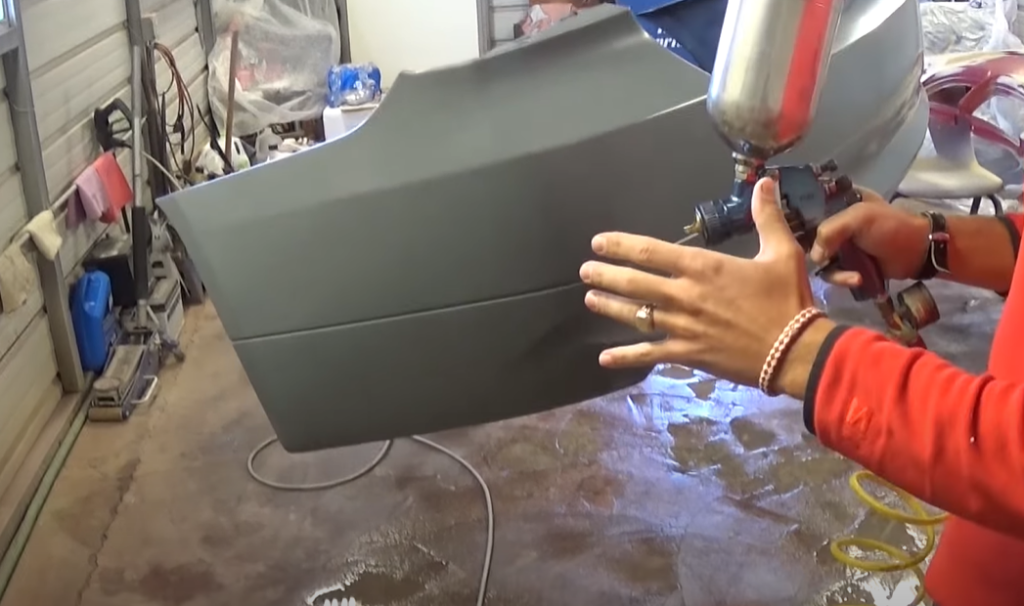Painting a car bumper involves various factors that impact the overall cost. Understanding these factors is crucial before making a decision. We will delve into the key considerations that influence the expense of this automotive enhancement, helping you make an informed choice for your vehicle.
How Much Does It Cost to Paint a Bumper?
Typically, painting your car’s bumper comes with an average price tag of approximately $500. Yet, more budget-friendly options in the range of $200 to $300 exist. Opting for the latter may mean sacrificing precise color matching and durability in the long run.
How Important is a Bumper?
A bumper plays a vital role in vehicle safety and protection. It absorbs impact during collisions, safeguarding passengers and reducing damage to the car’s frame. Additionally, it enhances aesthetics and aerodynamics.

Overall, a well-maintained bumper is crucial for both safety and the vehicle’s overall functionality and appearance.
What is the Process of Repainting a Bumper?
When it comes to reviving the appearance of your vehicle, repainting the bumper can make a significant difference. Whether it’s due to chipped paint, scratches, or just a desire for a fresh look, knowing the process for repainting a bumper is essential. Below is the step-by-step process to achieve a professional-looking result.
Gather Your Materials
Before you dive into the repainting process, it’s crucial to have all the necessary materials on hand. You’ll need automotive paint (matching your vehicle’s color), primer, sandpaper (various grits [1]), masking tape, plastic sheeting or newspaper, rubbing alcohol, and a clear coat for added protection.
Prepare the Work Area
To ensure a clean and safe workspace, start by parking your car in a well-ventilated area away from direct sunlight. Cover any nearby surfaces that you don’t want to accidentally paint with plastic sheeting or newspaper. This will help protect your surroundings from overspray.
Remove the Bumper
While it’s possible to paint the bumper while it’s still attached to the car, removing it provides better access and a more professional finish. Refer to your vehicle’s manual for specific instructions on bumper removal, as the process varies from car to car. Generally, it involves unfastening screws, clips, and bolts securing the bumper in place.

Clean the Bumper
Thoroughly clean the bumper using soapy water and a sponge. Rinse it off, and then wipe it down with rubbing alcohol to remove any remaining grease, dirt, or contaminants. This step is critical for ensuring proper adhesion of the paint.
Sand the Bumper
Using varying grits of sandpaper, start by lightly sanding the entire bumper’s surface. Begin with a coarse grit (around 220) to remove any imperfections or old paint. Progressively move to finer grits (400 and 600) for a smoother finish.
Be sure to sand evenly and avoid applying excessive pressure, which can create uneven spots.
Apply Primer
Once the bumper is smooth and free from imperfections, it’s time to apply primer. Use a plastic adhesion promoter primer specifically designed for automotive applications.
Apply a thin, even coat of primer to the entire bumper and allow it to dry according to the manufacturer’s instructions. Primer ensures that the paint adheres properly and enhances the final color.
Masking and Taping
Before you start painting, protect any areas of the bumper that you don’t want to paint by using masking tape and plastic sheeting. Carefully tape off the surrounding areas, ensuring clean and straight lines where the new paint will end.

Apply the Paint
Now comes the exciting part – applying the paint. Shake the automotive paint can thoroughly before starting. Hold the can about 6 to 8 inches away from the bumper’s surface and apply the paint in thin, even coats.
Start with a light misting coat, let it dry for a few minutes, and then apply additional coats until you achieve the desired color depth and coverage. Be patient and avoid heavy application, as it can lead to drips and uneven finishes.
Allow Proper Drying Time
After applying the paint, allow it to dry completely. This usually takes a few hours, but it’s best to consult the paint manufacturer’s instructions for correct drying times. It’s essential to be patient during this phase to avoid smudging or ruining the fresh paint.
Clear Coat
To protect the freshly painted bumper and give it a glossy finish, apply a clear coat. Follow the same process as with the paint – thin, even coats with drying time in between. The clear coat enhances the durability and appearance of your newly painted bumper.
Reattach the Bumper
Once the paint and clear coat are completely dry, carefully reattach the bumper to your vehicle following the reverse of the removal process. Ensure all screws, clips, and bolts are properly fastened and secure.

Final Touches
Remove any masking tape and plastic sheeting and inspect your work. Make any necessary touch-ups or corrections if you spot imperfections.
Factors Affecting the Cost of Painting a Bumper
The cost of painting a bumper can vary significantly based on several key factors. Understanding these factors is essential for budgeting and making informed decisions when it comes to automotive cosmetic enhancements. Below are the primary factors that directly impact the cost of painting a bumper:
- Bumper Material. The material of your bumper plays a crucial role in cost determination. Bumpers made from plastic are generally less expensive to paint compared to those made from metal or fiberglass.
- Bumper Size and Complexity. Larger and more intricate bumpers with multiple contours, creases, or intricate designs may require additional time and materials, increasing the overall cost of the paint job.
- Color Matching. Achieving a precise color match is essential for a seamless finish. Custom or non-standard colors can be more expensive to replicate accurately, potentially adding to the cost.
- Paint Quality. The type and quality of automotive paint used can vary in price. Higher-quality paint typically costs more but may offer better durability and a more polished appearance.
- Prep Work. The condition of the bumper before painting can impact costs. Extensive prep work, such as repairing dents, scratches, or surface imperfections, may increase labor costs.
- Removal and Reinstallation. Removing the bumper for painting and then reinstalling it can add to the overall cost. Some vehicles have more complex bumper removal processes than others.
- Paint Layers. The number of paint layers applied can affect the cost. A base coat, color coat, and clear coat are standard, but additional layers for added protection or customization can increase expenses.
- Labor Costs. Labor charges vary by location and shop. Highly skilled and experienced auto painters may command higher hourly rates, impacting the overall cost of the job.
- Shop Reputation. Established and reputable auto body shops often charge more for their services. However, their expertise and quality of work can justify the higher cost.
- Location. The cost of automotive services can differ significantly based on your geographic location. Urban areas tend to have higher labor and shop overhead costs, which can translate into higher bumper painting prices.
- DIY Versus Professional. While painting a bumper yourself can save money on labor, it may require investing in equipment, paint, and materials. The quality of the DIY result can also vary.
- Additional Customization. Any additional customizations, such as pinstriping, decals, or special finishes, will add to the overall cost.
Conclusion
The cost of painting a bumper varies due to factors like bumper material, size, and labor charges. To get an accurate estimate, consult reputable auto body shops and consider the specific needs of your vehicle. Understanding these factors will help you budget effectively for this cosmetic enhancement.

